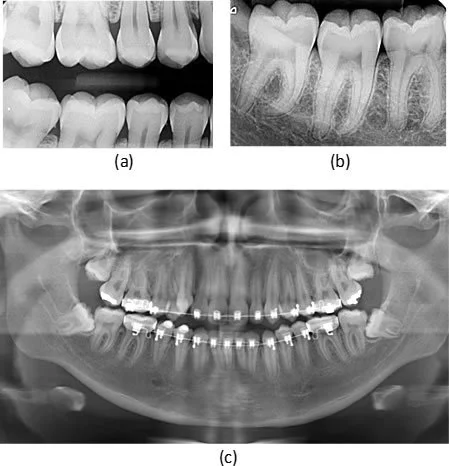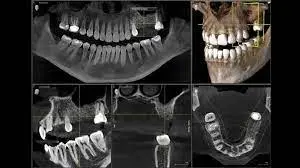Discover how to budget for dental travel effectively, from understanding treatment costs to navigating travel and accommodation expenses. Our guide provides practical tips to help you achieve substantial savings on dental procedures abroad without compromising quality. Start planning your journey toward an affordable, transformative smile experience.
Have you ever considered combining your dental care needs with a trip to an exotic destination? If so, you’re not alone. Many individuals are now exploring dental travel as a cost-effective solution to obtaining quality dental procedures while enjoying the benefits of international travel. This trend, known as dental tourism, is gaining traction among those seeking affordable yet high-quality dental services. But how do you budget for your dental travel effectively?
For individuals aged 40 to 70, particularly those residing in the United States, the quest for a beautiful and functional smile often comes with a rather hefty price tags. Procedures like All-on-4 implants and porcelain veneers in the U.S. can be exceedingly expensive.
Budgeting for your dental travel journey involves more than just comparing treatment costs. It’s about understanding all the associated expenses, from flights and accommodations to potential follow-up care. Our guide will walk you through a step-by-step process to create a realistic budget, ensuring you maximize savings without sacrificing quality.
Join us as we explore the intricacies of planning your dental transformation abroad. Discover tips for comparing treatment quotes, learn how to find the best deals on travel and lodging, and navigate the complexities of dental tourism with ease. Ready to embark on this transformative journey? Let’s dive in!
Understanding the Costs of Dental Travel: Treatment and Beyond
Embarking on a dental travel journey can be a cost-effective way to achieve the smile you’ve always wanted. However, it’s crucial to understand the various expenses involved to effectively budget for your dental travel. This section will delve into the costs associated with dental treatments abroad and beyond, ensuring you have a comprehensive understanding of what to expect.
While the allure of lower treatment costs is enticing, there are several other factors to consider to guarantee a safe experience with quality results. From travel and accommodation to potential follow-up care, each element plays a significant role in your overall budget. Let’s explore these costs in detail.
Treatment Costs: Comparing Domestic and International Prices
One of the primary reasons individuals opt for dental travel is the significant savings on treatment costs. For instance, procedures like All-on-4 implants, which can cost between $24,000 and $32,000 in the U.S., are available for as low as $6,500 in Colombia through Aleriom. This remarkable difference highlights the potential for savings when choosing international destinations.
To provide a clearer picture, let’s compare the costs of popular dental procedures in the U.S. and abroad:
- All-on-4 Implants: U.S. – $24,000 to $32,000; Colombia – $6,500
- Porcelain Veneers (per unit): U.S. – $2,000 to $3,000; Colombia – $400
- Dental Implants: U.S. – $5,000 to $6,000; Colombia – $800
These comparisons illustrate the potential for up to 80% savings, making dental travel an attractive option for many.
Wondering why prices are so much more affordable? Check out our blog Expensive Dental Care in the US: Why and How to Find Affordable Alternatives
Travel and Accommodation Expenses
While treatment costs are a significant factor, travel and accommodation expenses also contribute to your overall budget. Flights to popular dental tourism destinations like Colombia are generally affordable, especially when booked in advance. Additionally, some options offers packages that include accommodations and transportation, further reducing your out-of-pocket expenses.
For instance, a round-trip flight from the U.S. to Colombia can range from $300 to $600, depending on the time of year and booking window. Accommodation costs vary, but some packages often include stays at comfortable hotels near the clinic, ensuring convenience and peace of mind.
Potential Follow-Up Care Costs
It’s essential to consider potential follow-up care when planning your dental travel budget. While many procedures are completed in a single visit, some may require additional follow-ups. Some options include comprehensive packages often cover initial follow-up visits, but it’s wise to set aside a contingency budget for unexpected needs.
Moreover, maintaining open communication with your chosen dental provider can help manage any follow-up care efficiently. This proactive approach ensures that you receive the necessary care without incurring unexpected costs.
By understanding these various expenses, you can create a realistic and effective budget for your dental travel journey.
Maximizing Savings Without Compromising Quality
Embarking on a dental travel journey can be a smart financial decision, but it’s essential to ensure that cost savings do not come at the expense of quality care. In this section, we’ll explore strategies to help you maximize savings while maintaining high standards for your dental treatment abroad. By carefully selecting clinics, leveraging package deals, and conducting thorough research, you can achieve a successful and affordable dental travel experience. It’s important to state that most dental options in countries like Colombia will be more affordable than in the US, so it’s a wise decision to not just choose the cheapest option as it could mean sacrificing on care.
Choosing the right clinic is a critical step in your dental travel journey. Not all clinics offer the same level of care, so it’s important to conduct thorough research before making a decision. Start by checking the credentials of potential clinics and their dentists. Look for certifications from reputable organizations, which can indicate adherence to international standards. Additionally, reading reviews from past patients can provide valuable insights into the quality of care you can expect.
Researching Clinics and Checking Credentials
When researching clinics, consider their accreditation and the qualifications of their dental professionals. Clinics that are recognized by international dental associations often adhere to higher standards of care. Verify the credentials of the dentists, ensuring they have the necessary training and experience. Don’t hesitate to ask for proof of certification and licensing, as reputable clinics will readily provide this information.
Reading patient reviews is another effective way to gauge the quality of a clinic. Look for testimonials that highlight both the positive aspects and any potential concerns. This balanced perspective can help you make an informed decision. Websites like Aleriom provide detailed information about clinics in Colombia, including patient experiences and success stories, which can be invaluable in your decision-making process.
Leveraging Package Deals for Cost Efficiency
Many clinics offer package deals that bundle dental procedures with travel and accommodation services. These packages can significantly reduce your overall expenses by providing discounts on combined services. When evaluating package deals, consider what is included and compare it with the cost of booking each component separately. Often, these packages offer added convenience and peace of mind, as they handle logistics such as transportation and lodging.
For example, Aleriom’s packages include accommodation, private transportation, and 24/7 travel assistance, ensuring a seamless experience. Such comprehensive offerings not only save money but also provide a hassle-free travel experience, allowing you to focus on your dental treatment and recovery.
Prioritizing Quality Over Cost
While it’s tempting to choose the cheapest option, prioritizing quality is essential for a successful dental travel experience. High-quality care can prevent complications and ensure long-term satisfaction with your dental work. When comparing clinics, consider the materials used, the technology available, and the expertise of the dental team. Investing in quality care can save you money in the long run by reducing the risk of needing corrective procedures.
Remember, the goal is to find a balance between cost and quality. By following these strategies, you can maximize your savings without compromising the quality of your dental care.
Practical Tips for Planning Your Dental Travel Budget
Planning a dental travel journey can be both exciting and financially rewarding, but it requires careful budgeting to ensure a smooth experience. To effectively budget for your dental travel, you need to consider various factors, from treatment costs to travel expenses. Here, we provide practical tips to help you create a realistic and effective dental travel budget, ensuring you maximize savings without compromising quality.
Start by setting clear priorities for your dental travel budget. Determine the most important aspects of your trip, such as the type of dental procedure, choice of destination, and quality of care. This will help you allocate funds appropriately and avoid unnecessary expenses. Additionally, monitoring your expenses closely throughout the planning process will keep your budget on track.
Utilizing Budgeting Tools and Financial Planning
Effective financial planning is crucial for a successful dental travel journey. Utilize budgeting tools and apps to track your expenses and stay organized. Tools like Mint or YNAB (You Need a Budget) can help you categorize spending and set financial goals. These platforms offer insights into your spending habits, allowing you to adjust your budget as needed.
Consider setting up a dedicated savings account for your dental travel expenses. This will help you separate travel funds from your regular savings and ensure you have enough money set aside for your trip. Regularly contribute to this account to build up your budget over time. Additionally, explore financial planning strategies used by competitors in the dental tourism industry to enhance your budgeting approach.
Setting Budget Priorities and Monitoring Expenses
When planning your dental travel budget, it’s essential to prioritize expenses based on your needs and preferences. Start by listing all potential costs, including dental procedures, travel, accommodation, and any additional activities you plan to enjoy during your trip. Assign a priority level to each expense, focusing on essential items first.
Monitoring your expenses is equally important. Keep track of your spending using a spreadsheet or budgeting app, and adjust your budget as necessary. This proactive approach will help you identify areas where you can cut costs or reallocate funds. Regularly reviewing your budget ensures you stay on track and avoid unexpected financial surprises.
Competitor Strategies for Effective Budget Management
Learning from competitors in the dental tourism industry can provide valuable insights into effective budget management. Many successful dental travel companies offer package deals that combine dental procedures with travel and accommodation, providing significant cost savings. Consider similar strategies when planning your budget to maximize value.
Additionally, research how competitors leverage partnerships with local businesses to offer discounts on travel and lodging. By forming alliances with airlines, hotels, and local attractions, you can reduce overall expenses and enhance your travel experience. These strategies not only help manage your budget effectively but also provide a more comprehensive and enjoyable dental travel journey.
Take the First Step Towards Your Dream Smile
Budgeting for dental travel is a journey that promises not only financial savings but also the transformation of your smile. By understanding the comprehensive costs involved, from treatment to travel and accommodations, you can create a budget that aligns with your goals. Aleriom offers an exceptional opportunity to receive high-quality dental care in Colombia, ensuring that your investment leads to a successful outcome.
Remember that thorough research and planning are key to maximizing your savings without sacrificing quality. Consider these essential strategies:
- Compare treatment costs between domestic and international providers to identify the best value.
- Leverage package deals that include travel and accommodations for added convenience and savings.
- Use budgeting tools like Mint or YNAB to track and manage your expenses effectively.
As you embark on this exciting journey, don’t hesitate to explore more about dental travel options. Visit Aleriom’s website to learn more about how you can achieve your dream smile affordably and efficiently. Take the first step today and plan your dental travel journey with confidence.
We invite you to share your thoughts or experiences in the comments section. You can also connect with our community on social media using the hashtag #AffordableDentalCare to stay updated on the latest tips and insights.











Follow Us
Get your confidence back and Smile Again! We'd love to connect, follow us!